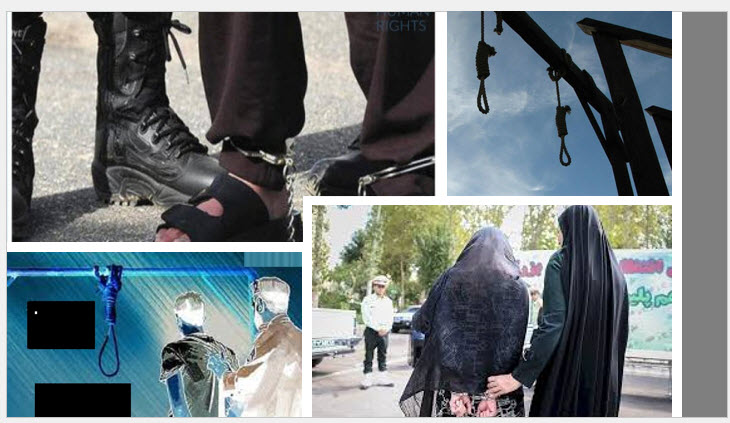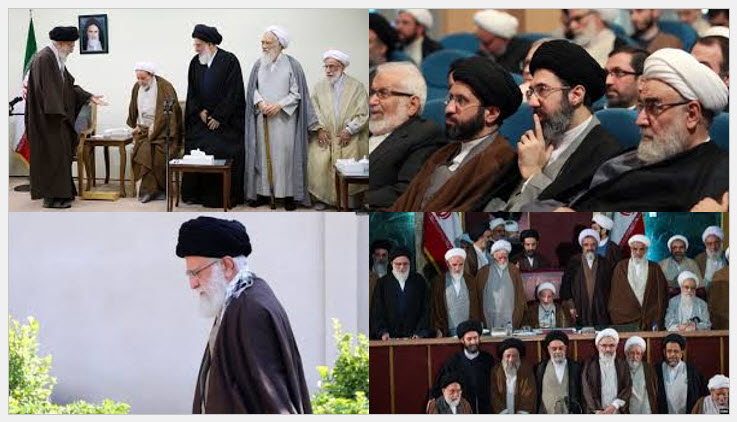
Families of death row inmates, mostly for drug-related offenses, have been protesting for several days in front of the regime’s judiciary to stop the regime from carrying out mass executions.
Human rights violations and acts of repression have increased in Iran since Ebrahim Raisi became president last year, as has the number of executions. More than 5000 people have been sentenced to death in Iran, according to human rights organizations. Twelve prisoners were executed on September 6, and another 10 prisoners were hanged on September 7 in Minab, Bandar Abbas, and Gohardasht prisons. The regime’s henchmen also hanged a 22-year-old prisoner, Ghafoor Nejatpour, in Gonbad Kavoos prison on September 8.
This is a rare occurrence in the regime’s history, demonstrating that the Iranian people are tired of state-sponsored violence, which coincides with rising resistance and political discontent in the country.
It should be noted that those sentenced to death for drug offenses are among the poorest and most marginalized members of society, which currently accounts for the majority of Iranian society given the country’s appalling crises. As per World Bank data, the absolute poverty population in Iran increased significantly between 2012 and 2018.
Another source of concern about the rising number of executions is the regime’s supreme leader, Ali Khamenei, and the regime’s disagreements over his successor.

Over the years, regime officials have frequently stated that the Assembly of Experts, the legal body that selects the supreme leader in accordance with the constitution, has generated a list of his successors. However, no official name has been announced.
Some names have surfaced in the regime’s media and public discourse. The current president, Ebrahim Raisi, is one of them, but due to his notoriety, particularly his direct involvement in the 1988 Massacre of political prisoners, he will face many obstacles in becoming the next leader. Over the last year, he has attempted to whitewash his bad reputation as a crusader against corruption, but every protest has revealed his true face.
Another name that has come up several times is Hassan Khomeini, the most famous grandchild of the regime’s founder, Ruhollah Khomeini, who appears to have the support of many of the regime’s clerics, particularly those on the ‘reformist’ faction.
The conclusion of the case demonstrates that the regime is facing a growing critical situation, in addition to its difficult nuclear case and the JCPOA negotiations. Competition is heating up among all of the regime’s factions, particularly among the hardliners, and Khamenei has lost control of many of them in recent years.

Some names have surfaced in the regime’s media and public discourse. The current president, Ebrahim Raisi, is one of them, but due to his notoriety, in 1988 he has no chance, the other one is Hassan Khomeini, the most famous grandchild of Khomeini.
The regime will face numerous crossroads in the coming months. The regime is most concerned about Khamenei’s successor because of the existence of well-organized opposition groups, such as the National Council of Resistance of Iran (NCRI) and the People’s Mojahedin of Iran (PMOI/MEK).
This Resistance was the main reason for Khamenei’s one-night appointment as supreme leader following Khomeini’s death in 1989, and it will be the regime’s main challenge once more this time. The only difference now is that none of the alternatives have the power of Khomeini and Khamenei, and the regime has faced numerous nationwide protests and has lost its credibility and people’s trust. That is the true reason for the regime’s increased executions.

Rasoul Montajabnia, a figure close to the regime’s higher echelons of power.“I am making an official announcement we have reached the end of the road, meaning we are completely cut off from the people and the people have lost all hope in us.

